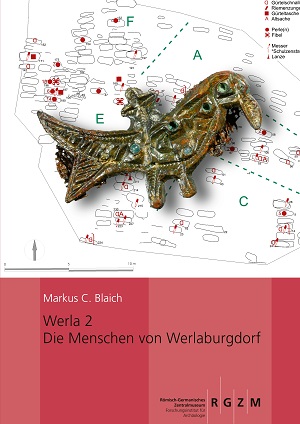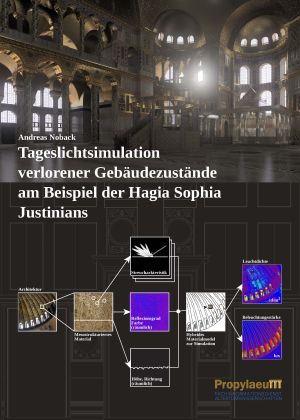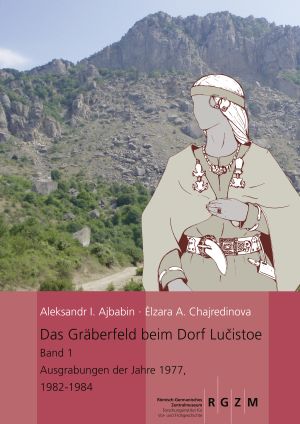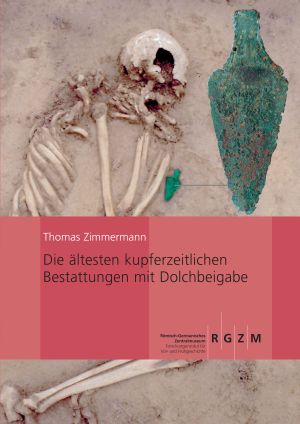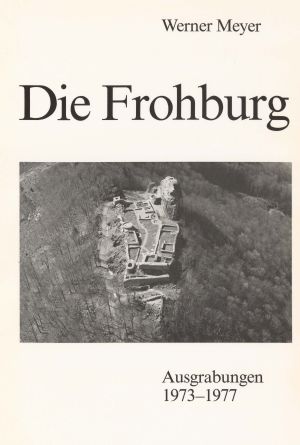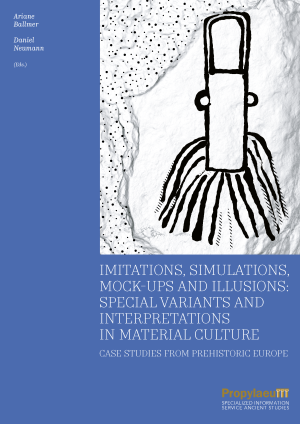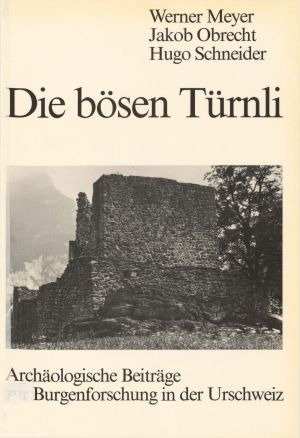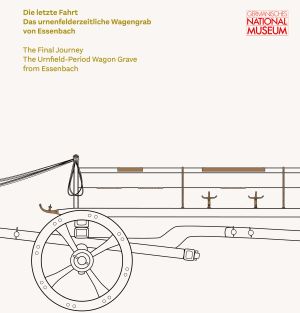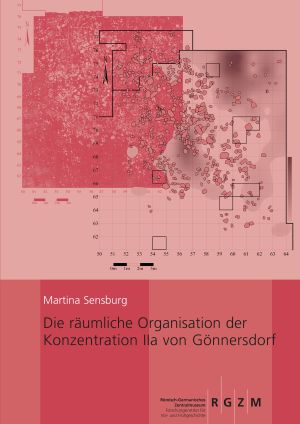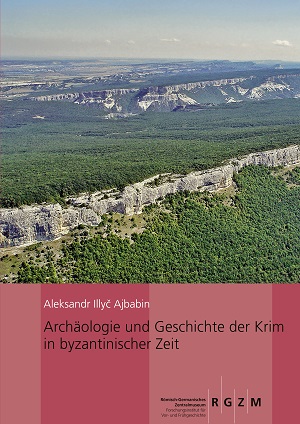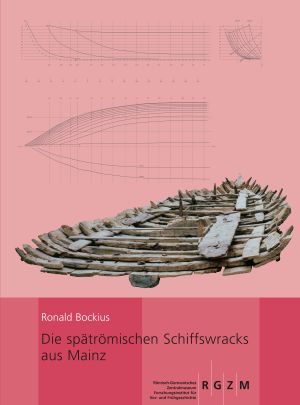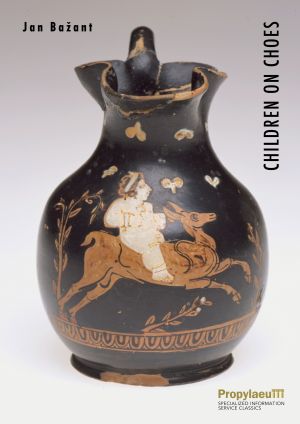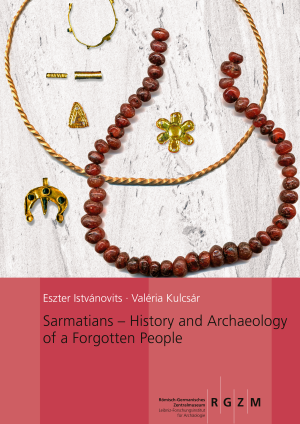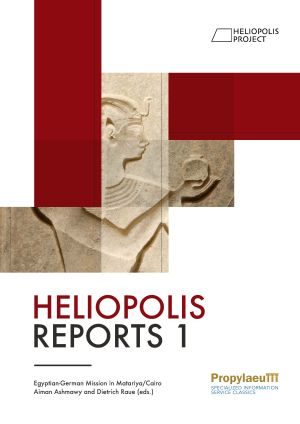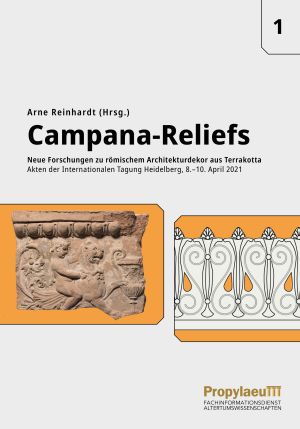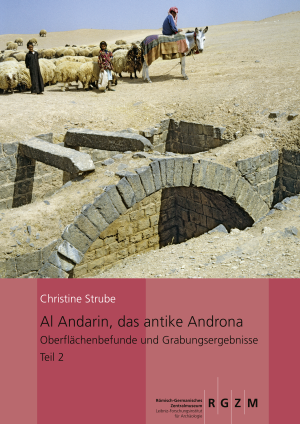Books
Werla 2: Die Menschen von Werlaburgdorf: Ein Beitrag zur Geschichte des Nordharzvorlandes im 8. bis 10. Jahrhundert
For northern Germany, the period of Charlemagne's Saxon Wars (772-804) was one of the most violent upheavals in its history. Over the next two centuries, the Harz foothills were transformed from a military outpost into the heartland of Ottonian royal power. The coronation of Heinrich I (919) and the election of his son Otto the Great (936-973) as his successor marked the end of this transformation. However, it is difficult to trace the changes in Saxon society on the basis of the available accounts and documents.
For this reason, the cemetery of Werlaburgdorf, with its approximately 260 inhumations, deserves special attention. It is the largest necropolis of its kind in the Brunswick region and has been almost completely excavated. It was in use between the mid 8th and mid 10th centuries. The associated settlement probably comprised a maximum of five to seven families or farmsteads. The combination of anthropological research (including age structure, sex ratio, infant mortality and disease burden) and archaeological analysis allows further conclusions to be drawn about the internal structure of the burial community and the possible occupation of several areas.
The cemetery of Werlaburgdorf is located in the immediate vicinity of the Werla-Palatinate, which was first mentioned in 926 - the analysis of the cemetery from a supra-regional perspective offers a very special view of the Werla-Palatinate and the consequences of its establishment for the rural population.
Tageslichtsimulation verlorener Gebäudezustände am Beispiel der Hagia Sophia Justinians
The interior lighting of Hagia Sophia has been praised since late antiquity but is no longer comprehensible in the preserved building state. By transferring methods of daylight simulation of modern buildings to historical research, it is possible to investigate the dynamic interplay of direct and diffuse lighting with the sparkle of the precious materials in the 6th century's state. In addition to its exemplary application, this work provides a theoretical framework for daylight simulation in the context of geometric reconstruction, the reconstruction of optical properties and perceptual-psychological analysis.
Supplementary data you find here: https://doi.org/10.11588/data/TONJFH
Das Gräberfeld beim Dorf Lučistoe
The cemetery near the village of Lučistoe on the southern coast of Crimea is a unique historical monument from the Migration Period. Between 1982 and 2007, 295 graves dating from the 5th to the 18th century were investigated. The catalogued source material makes it possible for the first time to study the population of the Crimean highlands over such a long period. With this volume, the RGZM begins the publication of the cemetery of Lučistoe, which is of great importance for the history of the Crimea and Eastern Europe. A detailed commentary provides a chronological and cultural-historical classification of the research results.
Die ältesten kupferzeitlichen Bestattungen mit Dolchbeigabe
The main objective of this study is to collect and analyze relevant closed single grave finds with mainly silex or metal daggers from the third millennium BC. However, to approach this complex of problems as comprehensively as possible, the earliest evidence of double-edged thrusting weapons from Eastern and Southeastern Europe and Western Asia Minor were also considered in their ritual funeral context. A larger digression is also devoted to the early manufacture of daggers in predynastic Egypt.
In addition to discussing chronological aspects of this arming custom, the genesis and spread of formal and technological traditions of this type of weapon are at the center of our interest. The critical question in this context is whether and how the dagger-bearing part of the population in the burial rite differs from burials at the same time without the addition of thrusting weapons. Ultimately, this leads to socio-historical considerations regarding how far the dagger can be understood as a status-forming accessory.
Latènezeitliche Mühlen aus dem Gebiet zwischen den Steinbruchrevieren Mayen und Lovosice
Mills produced in the quarry areas around Mayen and Lovosice were highly sought after in the Latène period due to their high quality. Again and again they appear in unexpectedly distant settlements. The region in between therefore lends itself to reconstructing the economic spheres of influence of both quarries.
By documenting as many mills as possible in this area and using petrographic analyses, it is possible to characterise these important quarries and identify other previously unknown sources. For the first time, sales areas and economic structures are documented in terms of cultural history and natural science. In addition to explanations of production, operation and utilisation, a compilation of the oldest mills in western Europe and the question of their inventors round off the study.
Akteure und Organisation der Handelsschifffahrt in den nordwestlichen Provinzen des Römischen Reiches
In ancient times, goods were transported by water whenever possible - including in the northern provinces of the Roman Empire, which were surrounded by the Mediterranean, Atlantic and North Sea. Here, a dense network of rivers offered ideal conditions for inland shipping.
We know a number of players in merchant shipping from inscriptions. In the northern provinces, these were mainly shipowners who referred to themselves as nauta inland and navicularius on the Gallic Mediterranean coast. The Gallic navicularii were also involved in transporting supplies to the capital Rome in the western Mediterranean. Based on the inscriptions, this study examines the professional groups involved in merchant shipping and their associations.
Die Verbreitung von Terra Sigillata aus den Manufakturen von Arezzo, Pisa, Lyon und La Graufesenque: Die Transformation der italischen Sigillata-Herstellung in Gallien
In the last decades of the 1st century B.C., some of the major producers of sigillata in Arezzo set up branches in Gaul to serve the local market. These soon drove the parent companies out of business. This process is documented by 230 distribution maps.
The branches in Gaul are presented in the context of the development of economic centres. They led to a transformation of this originally Italic industry, which was also reflected in a change in the legal status of potters and potteries in Gaul. In addition, transport costs were determined using GIS applications and visualised on maps. Dated sites allow a chronological categorisation of the potters discussed.
Die Frohburg: Ausgrabungen 1973-1977
The excavations carried out between 1973 and 1977 were the third attempt at examining Frohburg Castle by archaeological means. In this volume Werner Meyer outlines the course and results of the excavations. The first chapter on the history of research is followed by an analysis of the features excavated and the small finds recovered. The written records provide additional important insight. The final chapter presents the results of the examinations. The topics discussed include the history of construction and settlement, the economic and social history and, finally, the castle typology.
Unfertigkeit in antiker Architektur: Definitionen und Ursachen. Beiträge einer Sektion des Neunzehnten Internationalen Kongresses für Klassische Archäologie in Köln und Bonn am 23. Mai 2018
Almost no building of Greco-Roman antiquity is free of imperfections, although these vary greatly in type and extent. But what was perceived as unfinished in antiquity? What were the reasons for unplanned incompleteness? What was tolerated or even became a desired art form over time?
After a systematic introduction to the topic, seven contributions deal with humpbacked bosses and polygonal columns, then some case studies in Asia Minor - in particular the early Hellenistic mausoleum of Belevi, the late Roman eastern stadium gate in Miletus and several imperial buildings in Ephesus - and finally the huge Severan building complex in Leptis Magna (North Africa).
Imitations, Simulations, Mock-ups and Illusions: Special Variants and Interpretations in Material Culture: Case Studies from Prehistoric Europe
This book deals with artefacts that imitate other objects, without serving the same purpose as the originals. As imitations, simulations, mock-ups and illusions, they draw attention to themselves through their appearance and qualities, but also through their mise-en-place – they deceive, pretend and distract, but also provoke second looks. As it will turn out these special objects hold the potential to unfold tense metaphorical dynamics.
The essays in this book aim to elucidate this phenomenon, explore its diverse material manifestations and question the social function(s) of these artefacts. The case studies range from the Neolithic to the Early Iron Age, featuring material scattered throughout Europe, from the French Atlantic coast to Northern Europe, all the way to Southeastern Europe and the Aegean.
In this publication, the contributions appear successively. They are edited, have the final layout and are included unchanged in the full volume. Each early-view article receives a persistent DOI and is thus fully citable; only no pages can be given yet. Only when all articles are available will they be given page numbers. Please use the citation recommendation given in the PDF for the Early View.
Die bösen Türnli: Archäologische Beiträge zur Burgenforschung in der Urschweiz
This volume contains reports on the excavations and architectural investigations carried out at several castle sites in the cantons that made up the “Old Swiss Confederacy”. Six sites are presented: the castle ruins at Attinghausen, Seedorf, Zwing Uri, Gesslerburg, Schanau and Landenberg above Sarnen. The final chapter by Werner Meyer deals with the construction and demolition of castles in the region that is considered to have constituted the “Old Swiss Confederacy”. The book also contains numerous photographs and drawings.
Die letzte Fahrt: Das urnenfelderzeitliche Wagengrab von Essenbach
The Early Urnfield period wagon grave from Essenbach (Landshut district, Lower Bavaria) uncovered during a planned excavation in 2011 is an important new exhibit to the collection of the Germanisches Nationalmuseum. This volume, published on the occasion of an exhibition on this important feature, presents the Essenbach wagon grave and categorises it in terms of the society, economy and religion of the Urnfield period.
Die räumliche Organisation der Konzentration IIa von Gönnersdorf
The Magdalenian site of Gönnersdorf represents one of the rarest Late Palaeolithic settlements in Europe. Since its discovery in 1968, its exceptional preservation has enabled a steady increase in knowledge about the way of life of Ice Age hunter-gatherers. Thus, the fundamental investigation of the settlement structures in the large concentrations I, III and IV has already taken place. However, the central and at the same time richest concentration IIa has not yet been dealt with. With the present work, this gap can now be closed.
The focus of the analyses of K IIa is primarily on a reconstruction of the everyday activities of the former inhabitants. For this purpose, the spatial relationship of latent find distributions to the evident features, such as the central dwelling plan, the pits and the hearths, is discussed in detail. From this, as well as from the compositional analyses, decisive indications finally emerge that lead to the development of a completely new occupation model, not only for K IIa, but for the entire site.
Archäologie und Geschichte der Krim in byzantinischer Zeit
Although the archaeology and history of the Byzantine Crimea is a well-researched subject, the results of this research have received little attention outside the Russian-speaking world.
This monograph by the internationally renowned archaeologist Aleksandr I. Ajbabin, the result of a joint project between the RGZM and the Ukrainian Academy of Sciences, is intended to help raise awareness of this region, which was essentially characterised by the tense relationship between the steppe peoples and the Byzantine Empire.
This thoroughly revised and expanded translation of the work, which was first published in Russian in 1999, provides the German public with a comprehensive overview of the find material and its chronology, some of which is difficult to access.
Die spätrömischen Schiffswracks aus Mainz: Schiffsarchäologisch-technikgeschichtliche Untersuchung spätantiker Schiffsfunde vom nördlichen Oberrhein
As the only representatives of their kind, the ship finds from Mainz shed new light on late Roman military history. Their state of preservation provides insight into partly complex boat-building techniques and measures, which reveal links with the Romano-Celtic seagoing ship of north-western Europe; at the same time, Mediterranean know-how is also recognisable. Traces of ancient surveying and construction bear witness to special planning and work organisation achievements. Moreover, nowhere else is there such a comprehensive opportunity for the structural study of Roman belt drive systems and how they interacted with humans.
Designed as an evaluation of the archaeology of ships and the history of technology, and with a comparatively broad scope, the book opens up a new order of the finds, differentiating both chronologically and in terms of ship type. Meticulous documentation in words and pictures forms the basis for plan reconstructions that trace the shape, size, equipment and usability of the vessels.
Children on Choes
Between the second half of the fifth century BC and the first quarter of the following century, there was an increase in Athenian choes featuring images of children. A systematic analysis of these vase paintings has discovered that the painters did not document the lives of Athenian children, their activities, and how their parents perceived them. However, the choes with depictions of children is a valuable source of historical information on the self-image of Athenian men.
Sieg und Familie im frühen Prinzipat: Eine Studie zur militärischen Repräsentation der Verwandten des Augustus
This book examines how the military prowess of Augustus’ family was advertised within the city of Rome. The study draws on a variety of different sources. The focus is on contemporary written sources – in particular texts by the poets Virgil, Horace and Ovid. In addition, the study takes into account Rome’s monumental architecture and reports on celebrations for Augustus’ relatives held in the city. On this basis, the book paints a multifaceted, polyphonic picture of the discourse surrounding Rome's new first family and its military achievements.
Sarmatians – History and Archaeology of a Forgotten People
The book’s aim is to make a comprehensive introduction of the Sarmatians, the crucial people in the world of Iranian language speaking nomads.
The first part of the volume deals with the history and archaeology of these tribes starting from their emergence to the Hunnic invasion after which Iranian domination of the steppe belt was replaced by the power of Turkic nomads. Based on literary sources and archaeological material, the second part synthetises the history of the Sarmatians in the Carpathian Basin from the 1st to 5th century AD. A special emphasis is put on the steppe relations of the Alföld Sarmatians, innovations brought by new migration waves and, their impact on the autochthonous population. The third part is an outlook to the afterlife of the Sarmatians the traces of which stretch out from Britain to China.
Helіopolіs Reports 1
Since 2012, an Egyptian-German archaeological Mission has been working in the temple district of Heliopolis in Matariya/Cairo. Under the circumstances of progressive urban development, findings from the temple buildings and their associated infrastructure were examined in a number of areas. The publication gives an initial overview of the results and presents a selection of important finds. The project is carried out by the Ministry of Tourism and Antiquities of the Arab Republic of Egypt, Leipzig University, the High School of Applied Sciences Mainz and the German Archaeological Institut – Cairo Branch. The project was funded by the German Research Foundation, the Gerda Henkel Foundation, various other foundations and individual support.
Mehr als nur Sport: GymnAsia in der Antike
The bilingual book accompanying the exhibition “Mehr als nur Sport: GymnAsia in der Antike” was realized as part of a Franco-German research project dealing with the history of the Greek gymnasium in ancient Asia Minor, a part of modern Turkey.
The volume provides an overview of the spread and development of the gymnasium and its role in society, politics and religion from the beginnings in archaic Greece to late antiquity. Special attention is paid to the connection between the gymnasium and the culture of competition that was so characteristic of Greek antiquity.
Campana-Reliefs: Neue Forschungen zu römischem Architekturdekor aus Terrakotta: Akten der Internationalen Tagung in Heidelberg, 8.–10. April 2021
Architectural terracottas are typical of many Roman buildings from the Republic to the early Imperial period. Rich in imagery and colour, these terracottas adorned private and public buildings of the elite.
In spite of their broad use in Antiquity, modern research on this aspect of Roman architecture and cultural history is relatively scattered and often concentrates on the same aspects. For the first time, this volume gathers new international and interdisciplinary research on the topic, thus mapping out the current state of knowledge and at the same time introducing interesting perspectives for the future. Its sixteen contributions cover a broad range of topics, including the genesis and morphology of the genre, its imagery and polychromy, as well as the history of reception and collecting.
ARCHAEOZOOMS: Aspects and potentials of modern archaeological research
“ARCHAEOZOOMS” is the result of collective work between early career researchers. Scholars from Greece present their field of study, elucidating some of their major archaeological research questions. Traditional methods and interdisciplinary approaches are combined, establishing an open dialogue while outlining some current archaeological research trends and prospects in Greece and abroad. The primary objective of this publication is to communicate the methodological tools currently used in certain archaeological research fields. The variety of topics covered highlights the multifaceted skills that young archaeologists are required to possess during their professional journey.
Al Andarin, das antike Androna: Oberflächenbefunde und Grabungsergebnisse: die Umfassungsmauer und das Kastron, Teil 2
Al Andarin, ancient Androna, with its two enclosing walls, ten churches, a public bath and a large military building (castron) covers an area of 155 ha and is thus one of the largest ruined sites in the water-scarce steppe areas of central Syria. As the first of about 300 settlements in these areas, Androna was investigated by excavations and surveys in 1997-2007.
The present results on the surface features, the castron (559 AD) and the wall rings not only make the history of Androna in the 5th-7th centuries AD tangible, they also paint an extremely vivid picture of the relationship between countryside and city in the Late Antique-Early Byzantine period.
s. Volume 1
Zillingtal (Burgenland) – Die awarenzeitliche Siedlung und die Keramikfunde des Gräberfeldes: Teil 2
The study of the early medieval settlement (7th-8th century AD) and the pottery finds from the associated cemetery focuses on three main areas: Avar settlement features and settlement structures in the Carpathian Basin, pottery production and use in the Avar period, and Avar traditions in the Zillingtal regarding the burial of pottery vessels.
Among the settlement finds, the early medieval reuse of the Roman ruins is of particular interest. The analysis of the find material focuses on the pottery finds, together with the pottery vessels from the Avar cemetery. Archaeological and archaeometric analyses as well as methods of experimental archaeology are used. The chronology of the pottery and the anthropological data of the burials form the basis for the analysis of Avar traditions in the burial of pottery.
Part 1 here.
Zillingtal (Burgenland) – Die awarenzeitliche Siedlung und die Keramikfunde des Gräberfeldes: Teil 1
The study of the early medieval settlement (7th-8th century AD) and the pottery finds from the associated cemetery focuses on three main areas: Avar settlement features and settlement structures in the Carpathian Basin, pottery production and use in the Avar period, and Avar traditions in the Zillingtal regarding the burial of pottery vessels.
Among the settlement finds, the early medieval reuse of the Roman ruins is of particular interest. The analysis of the find material focuses on the pottery finds, together with the pottery vessels from the Avar cemetery. Archaeological and archaeometric analyses as well as methods of experimental archaeology are used. The chronology of the pottery and the anthropological data of the burials form the basis for the analysis of Avar traditions in the burial of pottery.
Part 2 here.



